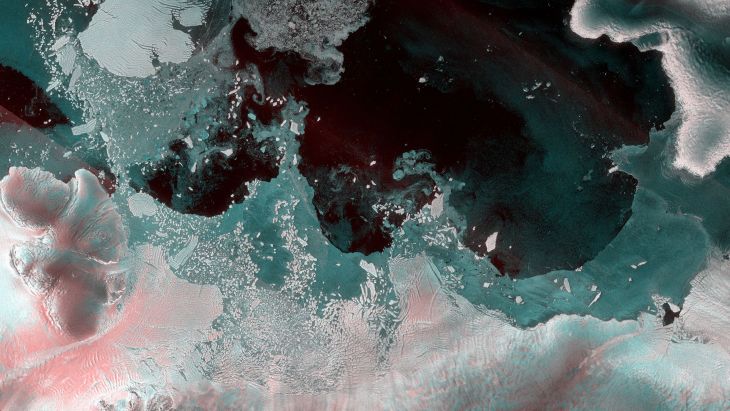The marine-based West Antarctic Ice Sheet, home to the vast and unstable Pine Island and Thwaites glaciers, sits atop a landmass lying up to 2,500 metres below the surface of the ocean. Since the early 1990s, scientists have observed an abrupt acceleration in ice melting, retreat and speed in this area, which is attributed in part to human-induced climate change over the past century.
Other scientists have previously indicated that this type of response across a low-lying landmass could be the onset of an irreversible, ice-sheet-wide collapse called a marine ice sheet instability, which would continue independently of any further climatic influence.
“The idea that once a marine-based ice sheet passes a certain tipping point it will cause a runaway response has been widely reported,” said Dr Frazer Christie from Cambridge’s Scott Polar Research Institute, the paper’s lead author. “Despite this, questions remain about the extent to which ongoing changes in climate still regulate ice losses along the entire West Antarctic coastline.”
Using observations collected by an array of satellites, Christie and colleagues found pronounced regional variations in how the West Antarctic Ice Sheet has evolved since 2003 due to climate change, with the pace of retreat in the Amundsen Sea Sector having slowed significantly in comparison to the neighbouring and much accelerated Bellingshausen Sea Sector.
By analysing climate and ocean records, the researchers linked these regional differences to changes in the strength and direction of offshore surface winds.
In this part of Antarctica, the prevailing winds come from the west. When these westerly winds get stronger, they stir up warmer, saltier water from deep in the ocean, which reaches the Antarctic coastline and increases the rate of ice melt.
“But between 2003 and 2015 offshore of the Amundsen Sea Sector, the intensity of the prevailing westerly winds reduced,” said Christie. “This meant that the deeper, warmer water couldn’t intrude, and we saw a notable change in corresponding glacier behaviour along the region: a clear reduction in the rate of melt and ice-mass loss.”














